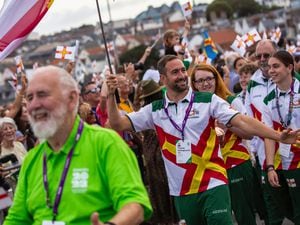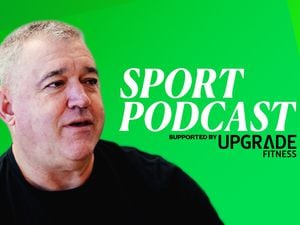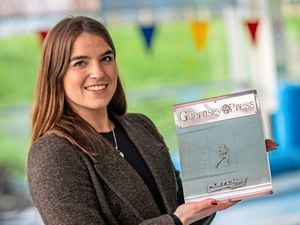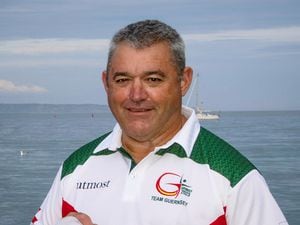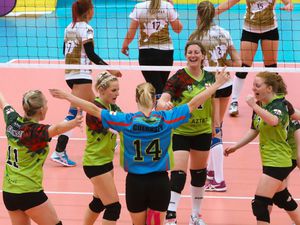Island Games: Get to know ... the Faroe Islands
Halfway between Oslo in Norway and Rekjavik in Iceland, the Faroes – whose nearest neighbour is Scotland – is a group of 18 islands and almost 800 islets that were first settled by Irish monks but now form an autonomous region of the Kingdom of Denmark.
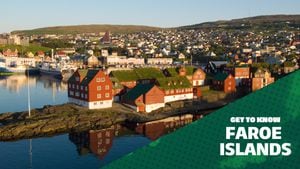
The archipelago has seen some dramatic change in recent decades, with massive spending on capital projects and an increase in population.
‘We have seen huge economic growth in the last 20-30 years,’ said general team manager Andras Nolsoe, who is also the adviser of sports and development at the Faroese Confederation of Sports and Olympic Committee.
‘We have been building the infrastructure a lot. We have connected almost 80% of Faroe Islands by either bridges or undersea tunnels.’
One of these tunnels, the Eysturoyartunnilin, is 11km long and links Streymoy and Eysturoy. Its biggest claim to fame is that it features the world’s first sub-sea roundabout, connecting the capital Torshavn in the south, to the nearby towns of Strendur and Runavik. This has cut typical travel times to 16 minutes from the previous 74.
Another area of big spending has been tertiary education, Andras said. ‘There has been a lot of investment in education, with a University of the Faroe Islands, where you can get higher education.
‘Earlier, you had to travel to Denmark or to other countries. It means people are staying here and can have good jobs. We have seen a huge increase in the population because of this.’
The islands’ headcount has increased by 10% in the last decade.
Listen to our Island Games preview podcast, featuring interviews with IIGA chairman Jorgen Petterson and Guernsey star Ala Chalmers
The fishing industry dominates the economy, accounting for about 90% of all export income. Open sea catches of mackerel, herring, cod and haddock amounted to half a million tonnes in each of the last 10 years, but salmon farming has also been developed more recently.
The Faroese news agenda has been focussed on the Russian invasion of Ukraine due to the potential consequences for the industry.
The Faroes are largely autonomous – loyal to the Danish crown but with laws determined by its own parliament, the Logting – and they have traditionally worked very closely with Russia in the exchange of fishing rights.
‘Around the Barents Sea, for example, we get a lot of quotas from Russia and then they will get some quotas around the Faroe Islands,’ said Andras.
‘This has been a very big talking point in politics recently. We decide who we do deals with because we are not members of the European Union. Denmark is but we are not. The problem is that foreign affairs belongs to Denmark, so there has been a tension.’
As for the people themselves, Andras said they are ‘very friendly, in common with a lot of islands, and very welcoming to tourists’.
He hopes the islands will have an opportunity to demonstrate that welcoming spirit by hosting the Island Games for a second time before too long.
The Faroes hosted the third games in 1989 and the Logting has approved funding of 1.5 million Euros if they are chosen to host again.
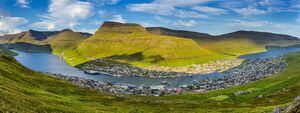
Football is the island's most popular sport but as they are now recognised by FIFA and UEFA and compete on the international stage – recently beating Turkey 2-1 – the Faroes no longer compete at Island Games level. Their focus is currently on their next international match in September, away to Poland.
The men are currently ranked 125th out of 211 recognised nations, while the women are ranked 100th out of 188.
Handball is also very popular and has become another sport in which the islands have achieved international recognition.
With victories over Ukraine and Romania, their men’s team earned a place in next year’s European Championships in Germany – the smallest nation ever to qualify – and will face Slovenia, Norway and Poland in Berlin.
This will be the first Island Games to which the Faroes will send a women’s basketball team, while its athletics squad will be 30-strong.
The Faroes have become a force to be reckoned with in recent games, finishing third in the medal table last time out in Gibraltar and second in Gotland in 2017.
However, the absence of gymnastics and judo will no doubt impact their ability to replicate that at Guernsey 2023.
Rowing is also popular in the Faroes but will not feature in these games. However, Faroese rowing is a different animal anyway. ‘Rowing dominates our sporting calendar in the summer months but the boats are wooden and quite different to what you see in the big competitions in the world,’ Andras said.
As for sporting rivalries, the Faroes’ isolation precludes any lasting enmities. ‘We are always comparing ourselves to Greenland but I don’t know if we think of ourselves as rivals. They are quite far away.’
About the Faroe Islands
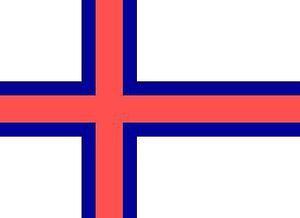
Area: 1,399 sq km (540 sq miles)
Population: 54,000 (2022 estimate)
Population density: 38.6 per sq km
Time zone: Same as Guernsey
Distance from Guernsey: 1,054 km (655 m)
Total IG medals won: 761 (252 G, 234 S, 275 B)
Medals won in 2003: 28 (6 G, 10 S, 12B)
Competitors coming to Guernsey: 150
Route: Direct flight from Faroes to Guernsey
Sports in which competing: archery, athletics, badminton, basketball, cycling, golf, shooting, swimming, table tennis, tennis, triathlon
Biggest sports star: Pal Joensen (swimming)
National delicacy: skjerpekjot (air-dried lamb)
Parliamentary representation: 32 in its own parliament – the Logting – and two seats in the 179-seat Danish Folketing.

